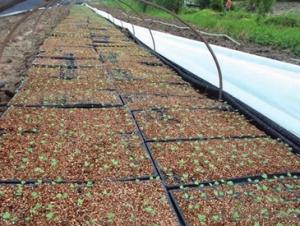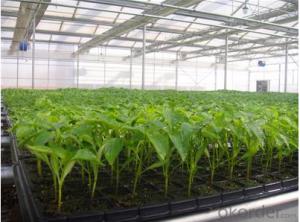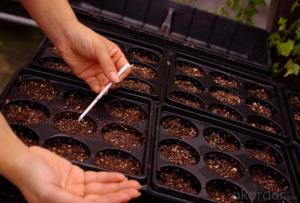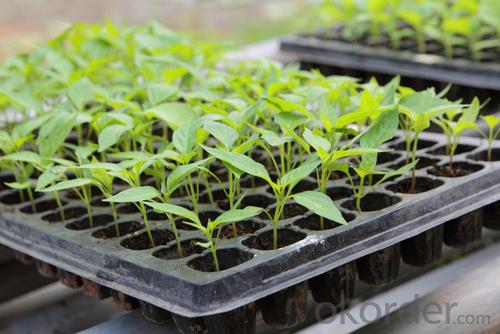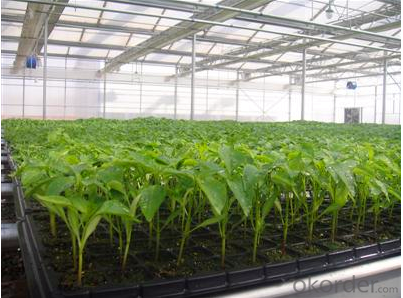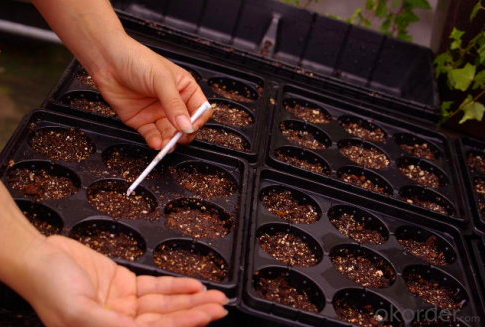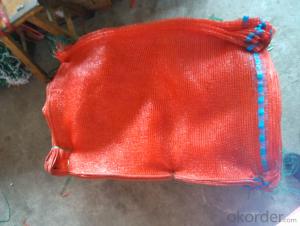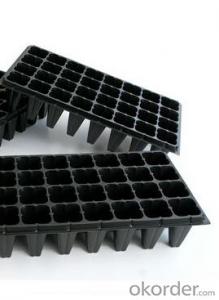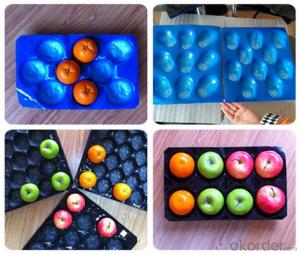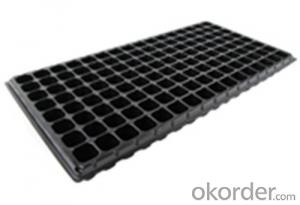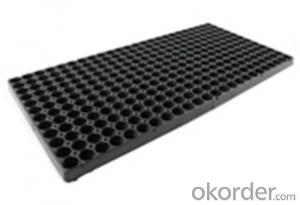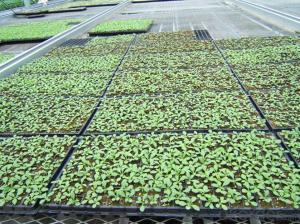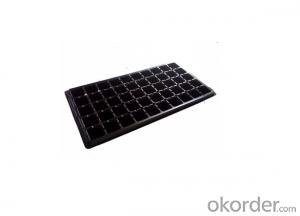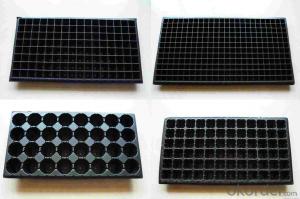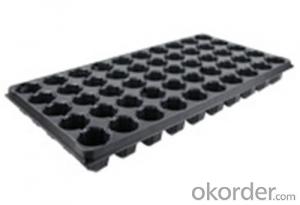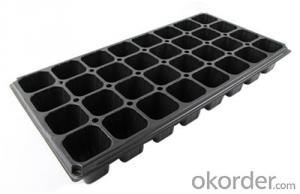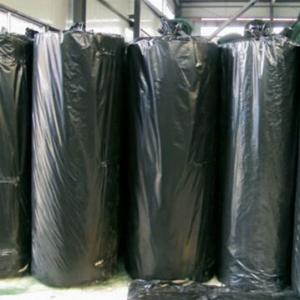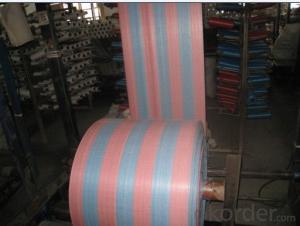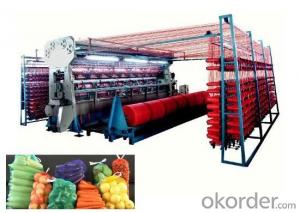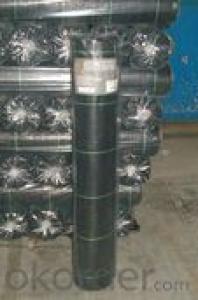Farm Pastures Planter Plastic Seed Cell Plug Tray
- Loading Port:
- China main port
- Payment Terms:
- TT OR LC
- Min Order Qty:
- 2000 pc
- Supply Capability:
- 2000000 pc/month
OKorder Service Pledge
OKorder Financial Service
You Might Also Like
Features:
Material: HIPS
Thickness: 0.5mm-1.5mm, Standard:1mm
Weight: 80g(±5)g-230g(±5)g, Standard weight:155g(±5)g
Size: length:490mm-540mm, width:190mm-345mm,depth:25mm-150mm
Standard:540mmX280mm
Cell count: 18-512
Package: In Carton
Warrenty: 8-10 times
Brief Introduction to CNBM:
CNBM International Corporation (CNBM International) is the most important trading platform of CNBM Group Corporation, a state-owned company under the direct supervision of State-owned Assets Supervision and Administration Commission of the State Council.
CNBM International is highly recognized by its business partners and clients all over the world and has obtained rapid development under the spirit of win-win. We will carry on the mutual beneficial, innovative and revolutionary trading structure as we did before, create value for our employees, share holders and clients and benefit the whole society in our future development.
Features:
Material: HIPS
Thickness: 0.5mm-1.5mm, Standard:1mm
Weight: 80g(±5)g-230g(±5)g, Standard weight:155g(±5)g
Size: length:490mm-540mm, width:190mm-345mm,depth:25mm-150mm
Standard:540mmX280mm
Cell count: 18-512
Package: In Carton
Warrenty: 8-10 times
Specification:
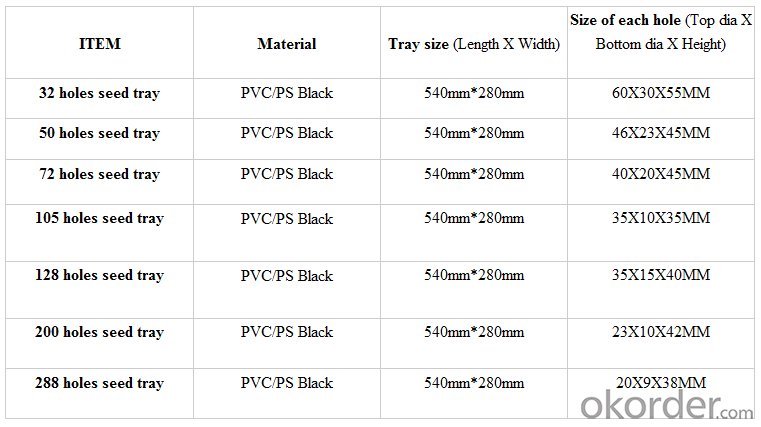 Picture:
Picture:
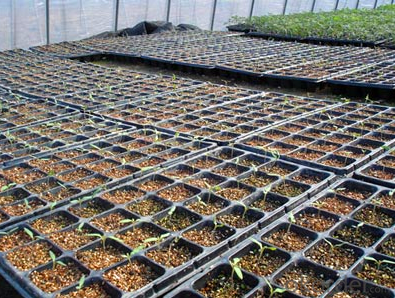
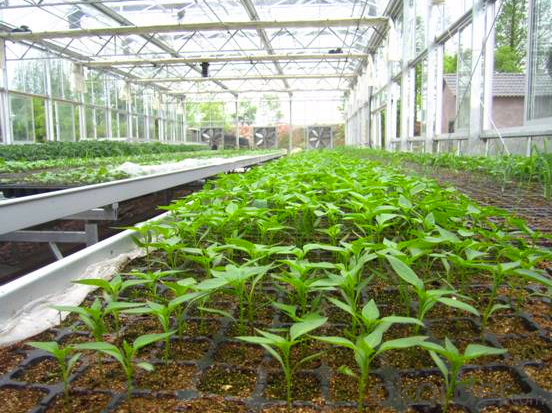

FAQ:
Q:1.How many times can the seed tray be used?
A: Under the same environment, it is decided by the thickness. Usually 0.6mm thickness can be used for 1 or 2 times.
1.0 thickness can be used for 3-4 times. 1.5 thickness can be used for 8-10 times.
Q: 2.How long is the production time?
A: Usually one to two weeks.
Q: 3.How is the seed tray being packaged?
A: They can be packaged in carton or pallets. Carton size is 55cm*29cm*50cm.
- Q: How does ground cover impact the soil's nutrient content?
- Ground cover can have a significant impact on the soil's nutrient content. Certain ground cover plants, such as legumes, have the ability to fix nitrogen from the atmosphere and add it to the soil, thereby increasing its nutrient content. Additionally, ground cover helps to prevent erosion and retain moisture, which can further enhance the soil's nutrient availability and overall health. Conversely, if the ground cover is composed of plants with high nutrient requirements, it can deplete the soil of essential nutrients, leading to nutrient deficiencies. Therefore, the choice of ground cover plants plays a crucial role in determining the soil's nutrient content.
- Q: What are the best ground cover plants for dry climates?
- Some of the best ground cover plants for dry climates include succulents like sedum and ice plant, as well as drought-tolerant grasses like buffalo grass and blue grama. Other options include thyme, creeping juniper, and lavender.
- Q: Can nursery trays be used for propagation?
- Yes, nursery trays can be used for propagation. They provide an ideal environment for starting seeds or rooting cuttings, as they have multiple small compartments that allow for easy organization and separation of different plant varieties. They also often come with built-in drainage holes to prevent waterlogging and promote healthy root development. Additionally, nursery trays are usually made from durable materials that can withstand frequent watering and handling, making them a practical choice for propagation purposes.
- Q: What are the different types of plastic wraps used in agriculture?
- There are several types of plastic wraps commonly used in agriculture, including low-density polyethylene (LDPE) wraps, high-density polyethylene (HDPE) wraps, and linear low-density polyethylene (LLDPE) wraps. These wraps are used for various purposes such as mulching, greenhouse covering, silage storage, and bale wrapping. Each type of plastic wrap has different properties, thicknesses, and strengths, allowing farmers to choose the most suitable option for their specific agricultural needs.
- Q: Can nursery trays be reused?
- Yes, nursery trays can be reused. They are often made from durable materials like plastic or recycled materials and can withstand multiple uses if they are properly cleaned and maintained. Reusing nursery trays not only helps in reducing waste but also saves money for gardeners and nurseries.
- Q: How do agricultural plastic products affect soil health?
- Agricultural plastic products can have both positive and negative effects on soil health. On the one hand, plastic mulch films can help retain moisture in the soil, control weeds, and increase crop yields. Additionally, plastic drip irrigation systems can ensure efficient water use and minimize soil erosion. However, improper disposal or management of plastic waste can lead to negative consequences. Plastic debris can accumulate in the soil, impeding water infiltration and root growth, and eventually harming soil fertility. Therefore, it is crucial to properly handle and recycle agricultural plastics to mitigate their potential negative impact on soil health.
- Q: Can nursery trays be used for cloning?
- Yes, nursery trays can be used for cloning. Nursery trays provide a suitable environment for cloning plants as they allow for proper drainage, air circulation, and ample space for multiple clones.
- Q: Are nursery trays suitable for growing air ferns?
- No, nursery trays are not suitable for growing air ferns. Air ferns are epiphytes, which means they grow on other plants or objects, and they do not require soil. Nursery trays are designed for growing plants in soil, so they would not provide the necessary conditions for air ferns to thrive. Air ferns are typically grown by attaching them to a piece of wood or other surface and misting them with water regularly.
- Q: This question asks for an overview of the various types of equipment used to prepare seedbeds in agricultural practices.
- <p>In agriculture, different types of seedbed preparation equipment are used to ensure optimal conditions for planting. These include: 1. Plows, which turn over the soil to break it up and bury crop residues. 2. Disk harrows, used to break up and mix the soil, creating a fine tilth. 3. Cultivators, which are used for secondary tillage to prepare a seedbed after initial plowing or disking. 4. Chisels, which are used to break up hardpan and create deep, narrow slots in the soil. 5. Subsoilers, which penetrate deep into the soil to break up compacted layers. 6. Rippers, used to break up hard soil and improve drainage. 7. Levelers, which smooth the soil surface after tillage. Each type of equipment serves a specific purpose in the seedbed preparation process, contributing to better seed germination and plant growth.</p>
- Q: Hey guys,I'm in need of some biodegradable plastic, to make a package for mydesign class at school.I was thinking of using something like this?
- definite you're suitable biodegradable plastics are created from starch and not in basic terms corn starches. it is actual made via fact if in any respect we throw it right here and there its will become degradable without turning out to be a pollutant. it extremely is not made commercial via fact growing to be starch putting it interior the plastics is in basic terms no longer elementary. supply all you are able to to shop our surroundings!!!!!
Send your message to us
Farm Pastures Planter Plastic Seed Cell Plug Tray
- Loading Port:
- China main port
- Payment Terms:
- TT OR LC
- Min Order Qty:
- 2000 pc
- Supply Capability:
- 2000000 pc/month
OKorder Service Pledge
OKorder Financial Service
Similar products
Hot products
Hot Searches
Related keywords
